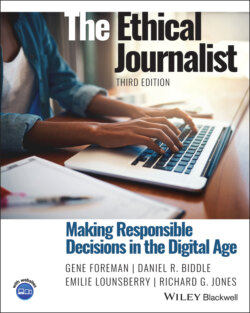Читать книгу The Ethical Journalist - Gene Foreman - Страница 36
The false ethical dilemma
ОглавлениеThe ethical dilemma, pitting one ethical value against another, is distinguished from what Josephson calls a false ethical dilemma. In such equations only one side has an ethical value. On the other side is a nonethical value. The clear choice for the ethical person is to reject the nonethical value and act on the ethical value, to “choose ethics over expediency.” 18
This is not to say that such choices are easy. To the contrary, these choices often result in self‐sacrifice. In journalism, for example, a reporter might have to give up doing a story that will raise broadcast ratings (a nonethical value) if it requires invading someone’s privacy (an ethical value). This underscores the point made at the beginning of this chapter – that doing the right thing requires action, and it can entail a heavy cost.
When Virginia Gerst quit her job over a principle and John Cruickshank acknowledged to advertisers that they had been shortchanged, they were making sacrifices in order to do the right thing. To do nothing, to go along, might have been an easier choice – but it would have been wrong. Gerst and Cruickshank were confronted not with an ethical dilemma (which Rushworth Kidder labels a right‐versus‐right choice) but with a false ethical dilemma (right versus wrong). This observation takes nothing away from the courage of either Gerst or Cruickshank.
